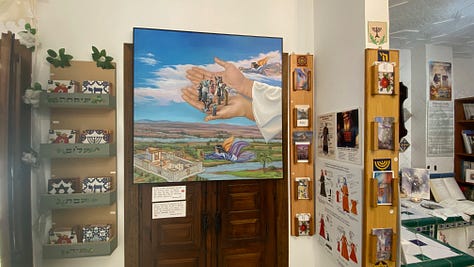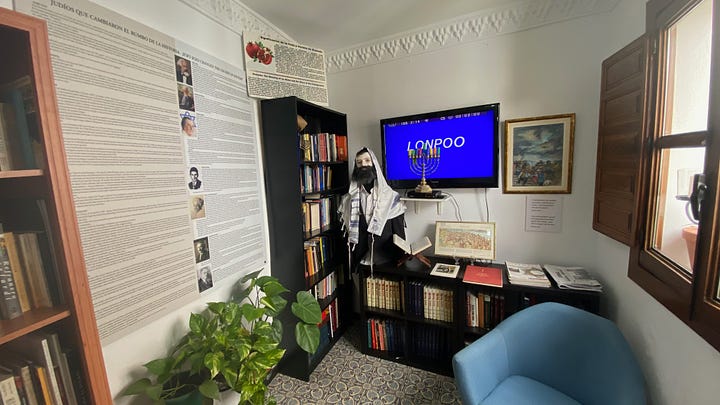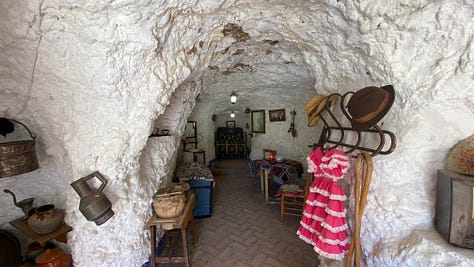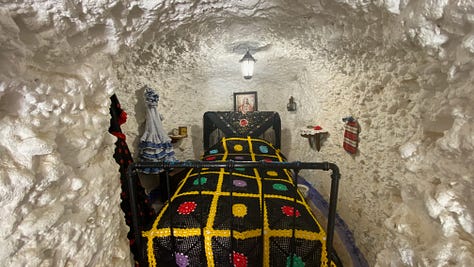Granada: not for the faint of foot
Be prepared for a lot of hills and sloping cobblestone streets in this ancient Andalusian capital

Described to me as “the most beautiful city in Spain” by an ex-pat I met in Toulouse, Granada was to be the highlight of my two-week trip to the Andalusian region of southern Spain. I had even managed to book a ticket for a guided tour of the Alhambra palace, a rare find indeed without booking well in advance (which I hadn’t).
I was also visiting during a statutory holiday period in May, so I’m surprised I found tickets at all. But visiting Granada without seeing Alhambra would be like visiting Paris without seeing the Louvre. When I checked the ticket office, however, nothing was available until June. Then I checked private tours. Although there were a few places available, the prices were €300 and more! Then I noticed that the price plummeted at the tail end of the holiday week, to just €38, so I snapped up a ticket.
My luck ran out pretty quickly tho. Less than a day later, the tour company emailed me to say they’d made a booking error and had to cancel my ticket. So I went back online and finally found a less complete tour for €89.
But what to do for the other three days in Granada? As usual, I did the free walking tour, and the guide provided an enlightening perspective on the city’s history as we walked up and down the narrow streets of the hilly Albaicin and Sacromonte neighbourhoods. The Sacromonte area was home to many in the city’s Roma population, who carved their homes and businesses right into the limestone cliffs. That’s where they would develop their own unique forms of flamenco, an art still practiced to this day in “caves” all around the city.
I forget sometimes that this blog is entitled Sixty-something Solo, so I should mention that many of the places on my itinerary are not for the faint of foot. The streets of Granada in particular are steep and cobblestones uneven, so you have to literally watch your step in many places. I witnessed a young woman who almost pitched face-forward while holding an infant as she tripped over a cobblestone, so visitors of all ages need to literally watch their steps on streets that were laid centuries before. And Spains pueblos blancos, in particular, were built into hillsides, so be prepared for a hearty hike in many top tourist spots.









Okay, you have been warned. Now on to the fun stuff.
Checking out the flamenco nightlife is de rigeur while in Granada (or in Andalusia in general). This is the birthplace of zambra, a Roma dance inspired by Moorish wedding traditions, accompanied by the vocal contribution of cante jondo, deep-voiced tales of Andalusian folklore. I had the pleasure of this energetic performance at Cueva Flamenca La Comino.
There are dozens of cuevas in Granada where you can book supper and a show, but there are also a few bars with free shows (as long as you buy drinks).
When you wake up hung over the next day, perhaps you’ll be thirsty for a different kind of cultural experience? I explored three on your behalf.
How about a museum you’ll not soon forget? Palacio de los Olvidados is a 16th-century palace that hosts the Inquisition exhibition, a display of more than 60 ancient torture devices, many used in the Spanish Inquisition. Displays include such classics as the rack and the iron mask as well as rarer beasts like the Bull of Phalarus and the Iron Virgin. A reminder that man’s inhumanity to man has deep roots, especially when dealing with people who profess the “wrong” faith. This was certainly the case in Granada, where both Jews and Muslims were persecuted or exiled after the Castilian conquest of the city in 1492. A treaty that promised respect for minority religious practices was torn up within a decade and conversion became obligatory.









Although small, Granada’s Jewish community also bore the scars of the Catholic takeover. The Sephardic Memory Centre of Granada is a small private museum opened by the Chevalier family in their own home after the government turned down a request for space. Beatriz Chevalier Sola and her husband’s families trace back their roots to the city’s anuism, a term referring to those coerced into abandoning judaism, at least in public. The exhibits include panels detailing the history of the city’s Jews and the lengths that some have gone to hide their heritage. Two of the panels explore the belief that author Miguel de Cervantes and explorer Christopher Columbus may have been of Jewish heritage but had hidden it to save their own lives.





And since we have been talking so much about caves, why not visit Granada’s Sacromonte Caves Museum? After a long walk up some steep streets and stairs, you’ll find a wonderful view of the city and 11 carefully preserved and restored dwellings, stables and workshops typical of the post-conquest Gitane, or Roma, population. One of the first things to strike you after that hot hike up the hill is how cool the caves are. No AC required, the caves are instantly refreshing, each covered in a lime whitewash that helps keep the sun from turning these caves into ovens. Each is decorated to reflect the typical use of the cave, from kitchen to stable to bedroom. This was literally the coolest museum I’ve been to in my travels and is well worth a visit.



Damn, we are running out of time and I haven’t even gotten to Alhambra yet! I’ll be back in a few days to finish off the tales of Granada. To hold you over, I’ll just leave you with this video illustrating how small the streets are here and how cars and pedestrians are engaged in a constant negotiation for maneuvering room. À bientôt.





